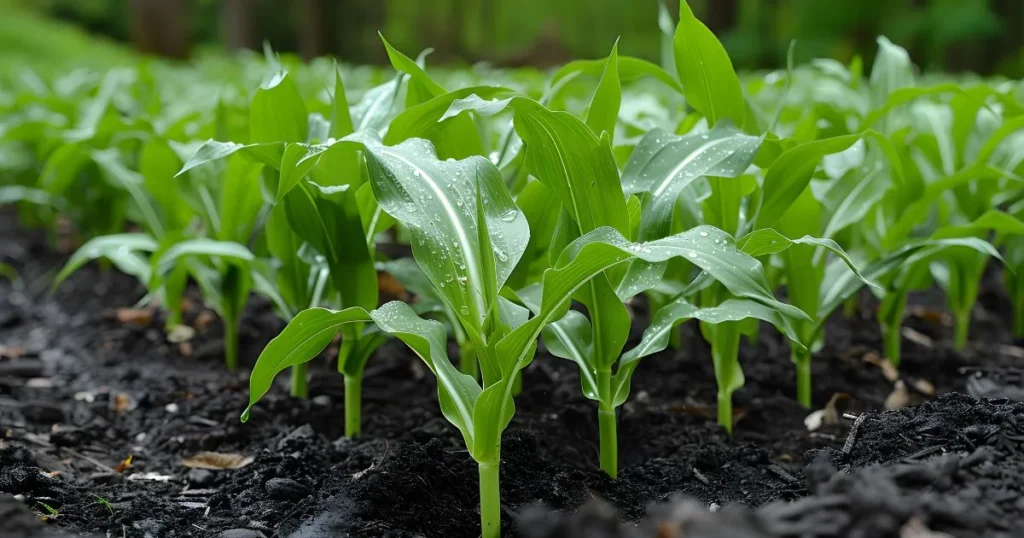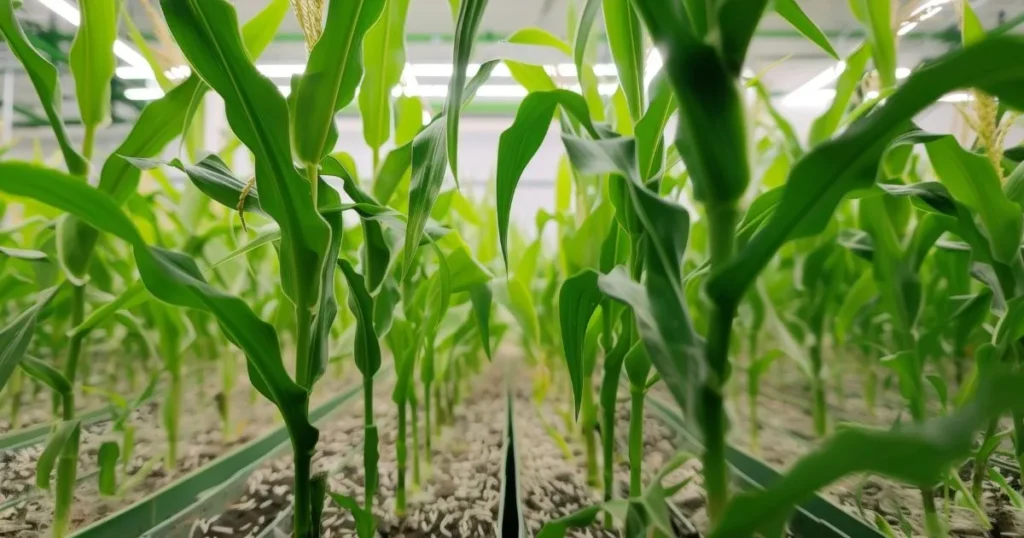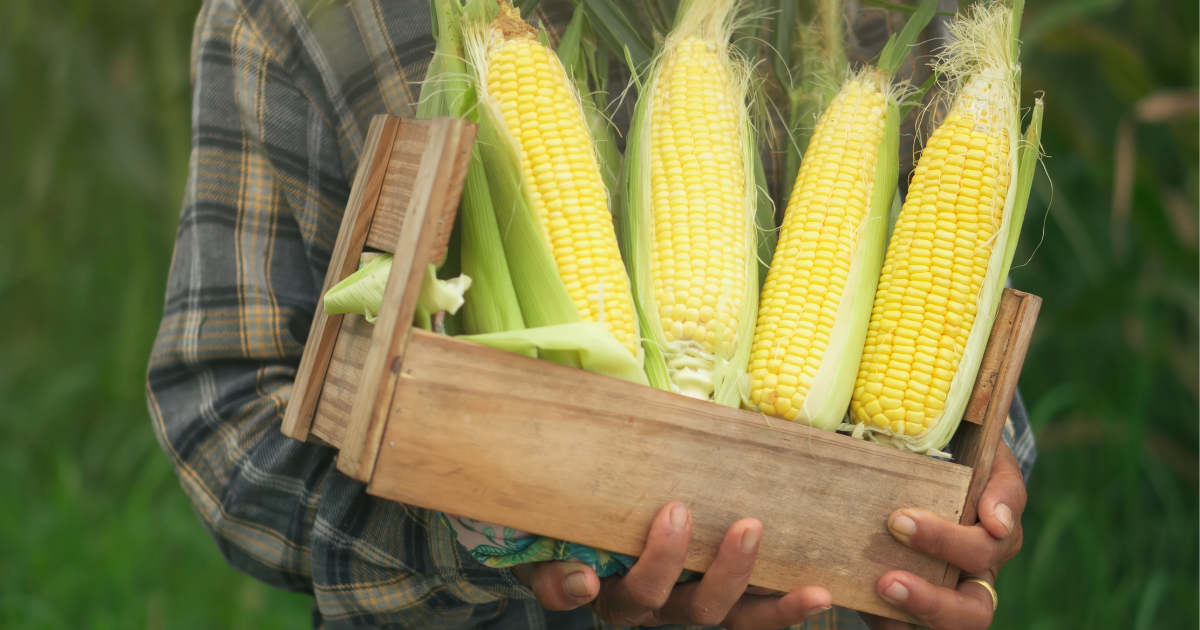Table of Contents
Introduction
Growing corn in raised beds has gained popularity among home gardeners and small-scale farmers. While traditionally grown in large fields, corn can thrive in a raised bed environment when provided with the right care. Raised beds offer improved soil drainage, better root development, and easier pest control, making them an excellent option for growing this staple crop. In this comprehensive guide, we will discuss everything you need to know about growing corn in raised beds, from selecting the right variety to harvesting a bountiful crop.
Benefits of Growing Corn in Raised Beds
1. Improved Soil Drainage
One of the biggest advantages of growing corn in raised beds is better soil drainage. Raised beds prevent waterlogging, which can lead to root rot and other diseases. With well-draining soil, corn plants receive the necessary moisture without being oversaturated.
2. Enhanced Soil Quality
Raised beds allow you to control the soil composition, ensuring that your corn grows in nutrient-rich, well-aerated soil. You can mix compost, organic matter, and fertilizers to create an ideal growing environment for your corn.
3. Better Weed and Pest Control
Since raised beds are contained, they reduce weed competition and make pest management easier. You can also use companion planting techniques to deter common corn pests.
4. Easier Maintenance
Growing corn in raised beds means less bending and kneeling, making gardening more accessible and enjoyable. Raised beds also allow for better spacing and organization of plants, leading to more efficient use of garden space.
5. Extended Growing Season
Raised beds tend to warm up faster in the spring, allowing you to plant your corn earlier than in-ground gardens. This can be beneficial in regions with shorter growing seasons, giving your corn a head start.
6. Increased Yield per Square Foot
Due to better soil quality and optimized spacing, growing corn in raised beds can lead to higher yields per square foot compared to traditional row planting. By ensuring that each plant gets the necessary nutrients, sunlight, and airflow, you can produce a more abundant harvest.
Choosing the Right Variety of Cor
When growing corn in raised beds, selecting the right variety is crucial. Corn comes in different types, and each has its own growing requirements.
1. Sweet Corn (Zea mays var. saccharata)
Sweet corn is the most popular variety for home gardens. It comes in three main types:
- Standard sweet corn (SU) – Traditional flavor but requires quick consumption after harvest.
- Sugar-enhanced (SE) – Sweeter and retains sweetness longer.
- Super sweet (Sh2) – Extremely sweet and has a longer shelf life.
2. Popcorn (Zea mays everta)
If you enjoy homemade popcorn, this variety is an excellent choice. Popcorn varieties need a longer growing season and require proper drying after harvesting.
3. Flour Corn (Zea mays amylacea)
Used mainly for making cornmeal and flour, flour corn has soft kernels that are easy to grind.
4. Dent Corn (Zea mays indentata)
Dent corn is commonly used for livestock feed and processing into cornmeal. It develops a dent in the kernel when it matures.
5. Ornamental Corn
Ornamental corn, also called Indian corn, is grown for decoration rather than consumption.
6. Hybrid vs. Heirloom Corn
Hybrid corn varieties are bred for disease resistance, higher yields, and uniform growth, making them an excellent choice for raised beds. However, heirloom varieties can provide unique flavors and textures, though they may require more care.
Preparing Raised Beds for Growing Corn
1. Selecting the Right Location
Corn requires full sun to grow well. Choose a spot that gets at least 6-8 hours of direct sunlight daily.
2. Bed Dimensions
A raised bed for corn should be at least 12 inches deep to allow proper root development. The width of the bed should be around 3-4 feet for easy access from both sides.
3. Soil Preparation
Corn thrives in well-drained, nutrient-rich soil with a pH between 5.8 and 7.0. To prepare the soil:
- Add compost or well-rotted manure to enrich the nutrients.
- Ensure the soil is loose and well-aerated.
- Mix in organic fertilizer or a balanced N-P-K fertilizer (10-10-10) before planting.
4. Spacing and Companion Planting
When growing corn in raised beds, spacing is important. Plant corn in blocks rather than single rows to ensure proper pollination. Spacing recommendations:
- Plant seeds 8-12 inches apart in rows that are 18-24 inches apart.
- Use the Three Sisters method, planting beans and squash alongside corn to improve soil fertility and reduce weeds.

Caring for Corn in Raised Beds
1. Watering Requirements
Corn needs about 1-2 inches of water per week. Water deeply to encourage strong root growth.
2. Fertilization
Corn is a heavy feeder. Apply nitrogen-rich fertilizer every 3-4 weeks to support vigorous growth.
3. Pollination
Since corn relies on wind pollination, planting in blocks improves pollination success. Hand pollination can also help increase kernel development.
4. Mulching
Applying mulch helps retain soil moisture, suppress weeds, and regulate soil temperature, which is crucial for healthy corn growth.
5. Staking and Support
In raised beds, corn can be susceptible to strong winds. Providing some support, such as stakes or planting near a windbreak, can prevent plants from toppling over.
Common Pests and Diseases
1. Pests
- Corn Earworms – Prevent by applying Bacillus thuringiensis (Bt) or using row covers.
- Aphids – Control with insecticidal soap or neem oil.
- Cutworms – Use collars around seedlings to deter them.
2. Diseases
- Rust – Remove infected leaves and ensure good air circulation.
- Smut – Prevent by rotating crops yearly.
- Root Rot – Avoid overwatering and ensure proper drainage.
Harvesting and Storing Corn
1. Harvesting Time
Sweet corn is ready for harvest 60-100 days after planting when kernels are plump and milky.
2. Proper Harvesting Technique
Twist and pull the ears downward to remove them from the stalk.
3. Storing Corn
- Fresh corn – Refrigerate and consume within 3 days.
- Freezing corn – Blanch and store in airtight containers.
- Drying corn – Store dried kernels for making popcorn or flour.

Conclusion
Growing corn in raised beds is a rewarding experience that allows gardeners to cultivate fresh, delicious corn in a controlled environment. With the right variety selection, proper soil preparation, adequate care, and timely harvesting, you can enjoy a successful corn harvest in your raised bed garden. Whether you are growing sweet corn, popcorn, or flour corn, following these guidelines will ensure healthy plants and a bountiful yield.
Frequently Asked Questions (FAQ)
1. Can I grow corn in a small raised bed?
Yes, but choose dwarf or short-season varieties to maximize space.
2. Do I need to hand-pollinate corn in raised beds?
If growing a small number of plants, hand pollination improves kernel development.
3. How deep should the raised bed be for corn?
A depth of at least 12 inches is recommended for optimal root growth.
4. Can I grow corn in containers instead of raised beds?
Yes, but use large containers with at least 10-15 gallons of soil per plant.
5. What is the best fertilizer for corn?
Use a nitrogen-rich fertilizer, such as blood meal or composted manure, to support growth.

